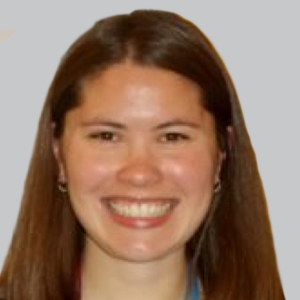Article
Characteristics of Nemaline Myopathy Clarified by Cross Sectional Study
Author(s):
NM was found to have a stable disease course and the most common classification was typical congenital.
Kimberly Amburgey, MS

A recent comprehensive cross-sectional study studied clinical classifications, disabilities, disease courses, and measures of nemaline myopathy (NM) identified the need for further diagnostic investigations as well as a group of promising outcomes for future clinical trials.
Most of the 57 participants (n = 44) were assessed with the motor function measure (MFM) scale and had reduced scores. Abnormal values were also observed in 65% of the 27 patients assessed with pulmonary function tests (PFTs). Bulbar function was also abnormal in all patients.
First author Kimberly Amburgey, MS, genetic counselor, pediatric neuromuscular clinic, Hospital for Sick Children, and colleagues wrote that “NM is characterized by congenital onset bulbar and extremity weakness and hypotonia… At present, there are no proven disease modifying therapies for NM... Detailed natural history is needed to optimize current clinical care and to identify potential outcome measures for future clinical trials. With this in mind, we evaluated disease features and quantitative measures in a cohort of 57 individuals with NM. We provide an in-depth cross-sectional study of NM, plus longitudinal assessment in a subset of cases.”
Of the 57 patients included in the study, 54% (n = 31) were classified as having typical congenital NM, 20% (n = 11) had severe congenital NM, and 22% (n = 12) had intermediate congenital. Some mechanical support was needed in 58% (n = 33) participants and 26% (n = 15) required support across all domains of wheelchair, tracheostomy, and a feeding tube. Ventilatory assistance was needed in 60% of participants; 32% invasive with a median age of initiation of 0.9 years and 28% non-invasive with a mean age at initiation of 4 years. Feeding tubes were needed in 51% of patients, and wheelchair assistance was required in 30% of participants over the age of 2 years.
Amburgey and colleagues calculated an overall severity score for each individual that encompassed ambulatory status, respiratory support, and feeding support. Participants in the cohort were split, with 25 patients receiving a mild score with little no support required and 28 receiving non-mild scores.
WATCH NOW: Michael Okun, MD: Long-Term Plan for Modifying Neurologic Device Approval System
Genotypes of NM were studied, and 18 patients (32%) had mutations in ACTA1, 20 (35%) in NEB, and 2 (4%) in TPM2. Clinical phenotypes were largely similar between ACTA1 and NEB variants. Genotype was not able to be determined in 17 participants (35%), and these participants experienced more severe disease courses.
Motor function was also assessed, with the most affected muscles found to be neck flexors and hip girdle. Myometry was performed at the elbow, knee, and hip joints and all but 2 participants had values below 50% of normalized levels. Only 5 participants had severely reduced joint range of motion at the elbow, knee, and ankle, while 30 had normal or mildly reduced range of motion. Myalgias were also reported by 7 (21%) patients and muscle slowness was reported by 2 (6.5%).
Amburgey and colleagues conducted motor measurements such as Gowers’ maneuver, 4-stair climb, and the 10-meter run test on 44 participants. Half (n = 22) of the participants could not rise from the floor, 16% (n = 7) could rise with assistance, 16% (n = 7) had a classic Gowers’ sign, 14% (n = 6) had a modified Gowers’ sign, and 7% (n = 3) rose without difficulty. The average time for Gowers’ maneuver was 11.14 seconds compared to a normal time of 1.35 seconds. The 4-stairs climb had a mean time of 4.51 seconds to ascend and 3.13 seconds to descend and the 10-meter run test, conducted in 8 participants, took a mean time of 26 seconds as compared to a normal time of 5.5 seconds.
Participants showed reduced scores on MFM, with 2 participants reaching the full score of 60 and 1 with a score of 0 (mean, 35.8). Domain 1 scores were the most reduced with a mean of 8.47 out of 24, followed by 17.9 out of 24 on domain 2 and 9.49 out of 12 on domain 3. PFT was performed in 27 participants and 26 (96%) had lower than predicted maximal inspiratory pressure, 22 (81%) had lower peak cough flow, and 11 (65%) had lower forced vital capacity values.
Scoliosis was found in 69% of participants as the most common comorbidity, followed by 55% with dysphagia and 51% with acid reflux. Bone fractures were present in 36% of participants, and cardiomyopathy, clinical jaundice, and kidney stones were each found in 13%. Seizures were observed in 10% and disability was reported in 17%.
The drooling rating scale was used to assess bulbar function and a third reported frequent drooling, the severity of which was moderate to severe in 50% of participants. An exploratory outcome measure called the slurp test was also used to assess bulbar function, and all but 2 participants had measured times that were 2–3 times longer than normal for their age.
Extent of disability and quantifiable outcomes were assessed longitudinally in 16 participants. These participants had a median age of 4 years (range, 1.5–20) in 2009. Amburgey and colleagues found the course of NM to be relatively stable, with 3 of 8 participants losing ambulation. Feeding tubes remained necessary in 6 (43%) participants, the same number did not require a feeding tube at the beginning or end of follow-up, and 3 no longer required feeding tubes. New respiratory support was needed in 3 participants and none improved respiratory status.
“This study provides new and updated information regarding the nemaline myopathy disease process, which should guide clinical care. We also, for the first time, investigate potential outcome measures for future clinical trials, and establish that the MFM20/32, PFTs, and the slurp test may all provide meaningful data for testing interventions to treat the nemaline myopathy,” Amburgey and colleagues concluded.





